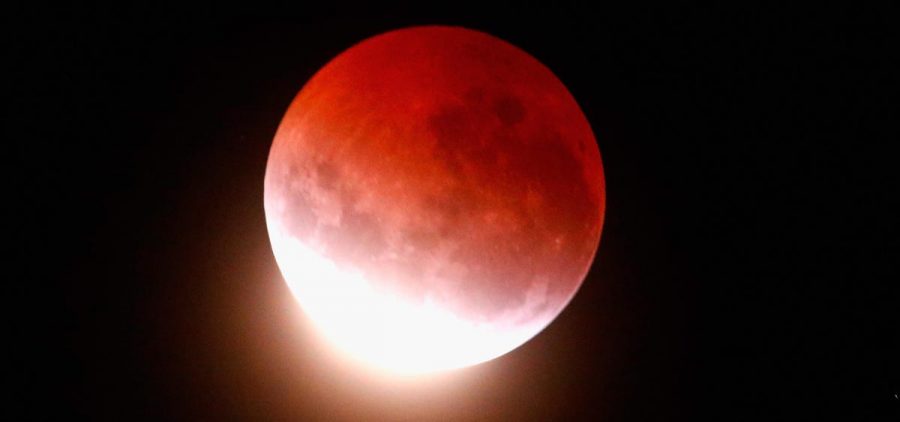November’s lunar eclipse makes history: longest in 580 years
Photo used with permission from Google Commons
The reddish color of a Blood Moon is caused by the reflection of sunlight that has first passed through the Earth’s atmosphere.
November’s lunar eclipse was an unusual one because of the six-hour length and the fact that, during the eclipse, the moon was actually at its peak distance away from the Earth (the moon’s orbit around the Earth isn’t a circle). Interestingly enough, according to NASA, the last time a lunar eclipse lasted this long was in the 1440s. The next time a lunar eclipse will reach this distance is supposed to occur in the year 2669.
The lunar eclipse was estimated to have an umbral eclipse magnitude of approximately .97, which means that 97 percent of the moon would be covered by Earth’s umbral shadow. The eclipse was most visible to viewers in North America, New Zealand, Australia and Japan.
The reason that this particular eclipse lasted so long, the longest in 580 years, was because, according to earthsky.org, the maximum point of the eclipse was about 41 hours before the moon reached its apogee, or point farthest away from the earth. By contrast, the eclipse in May only had a nine-hour difference between the apogee and the peak of the eclipse.
The science behind why the color of the moon changes during the lunar eclipse is quite fascinating as well. The reason the moon turns into a reddish hue is because the only sunlight that hits the moon is the sunlight that is passing directly through Earth’s atmosphere, whereas usually, the white-grey color that we’re used to is the rays of the Sun unblocked by the Earth. According to NASA, the phenomenon that makes the sky blue and the sunsets orange, called Rayleigh Scattering, is that the sunlight passes through more atmosphere, only allowing longer-wavelength light to hit the moon, and create the light that it shows.
Honors physics teacher Kristen Schwarz explained the science behind lunar eclipses. “You’ve got the full moon, sun, and moon, all closely lined up, and when the moon ends up in the Earth’s shadow, you can have a total eclipse, partial eclipse, or a penumbral eclipse, which is when just the outside of the moon is visible, which has to do with where, or what part of the shadow is being covered,” Schwarz said. “I personally thought this recent one was really cool. We got up outside and looked at it, and it was fascinating.”
Honors physics teacher Michael Thompson gave a similar explanation. “Lunar eclipses work when Sun-Earth-Moon form a straight line, in that order. The Earth blocks the sunlight that was hitting the Moon, and the full Moon becomes dark in the night sky. The effect only lasts a few hours. At the beginning and end of the eclipse, you can see the curved edge of the Earth’s shadow on the Moon. This was one of the early pieces of evidence that the Earth was round. Lunar eclipses are more common, but less exciting than solar eclipses, which is when the Moon and Earth switch places in the straight line and the Moon blocks the sunlight hitting the Earth. We had a really good one observed in North America back in 2017, and the next great one visible here will be in April of 2024. This last lunar eclipse in November was special because it was the longest lasting one in an over thousand-year period,” Thompson said.
Thompson also acknowledged the importance of this eclipse. “While I don’t feel that lunar eclipses are worth getting out of bed for, I did notice the November one while driving before sunrise. I am not always dialed into the current moon phase, but I noticed a strange looking crescent moon when it should have been a full moon. I was seeing the Moon emerging from the shadow of the Earth,” Thompson said.
Your donation will support the student journalists of Thomas S. Wootton High School. Your contribution will allow us to purchase equipment and cover our annual website hosting costs.
Simon Kidane is a 2022 graduate. When not writing articles, Simon likes to spend time playing sports like soccer, watch TV, and play video games....











